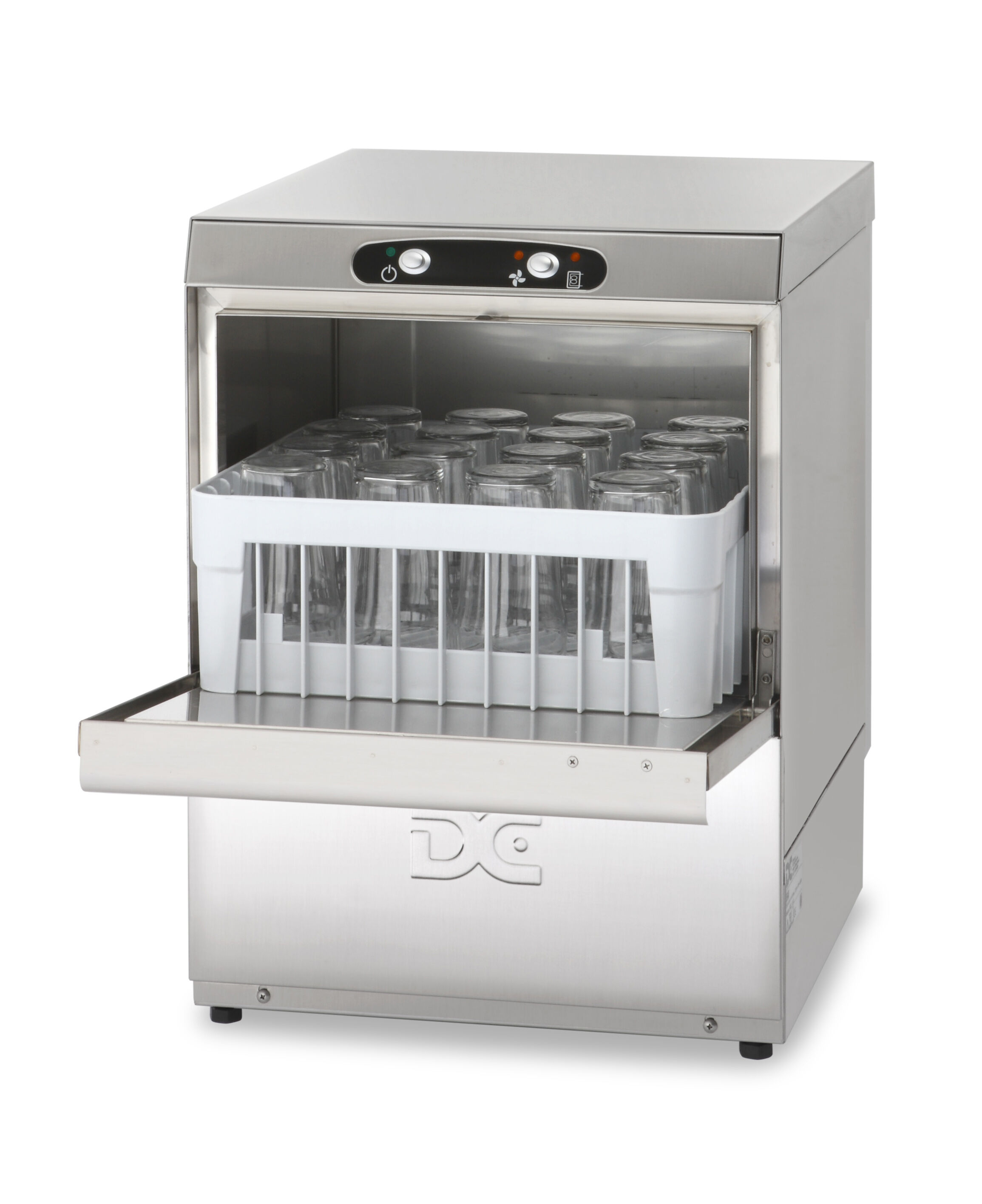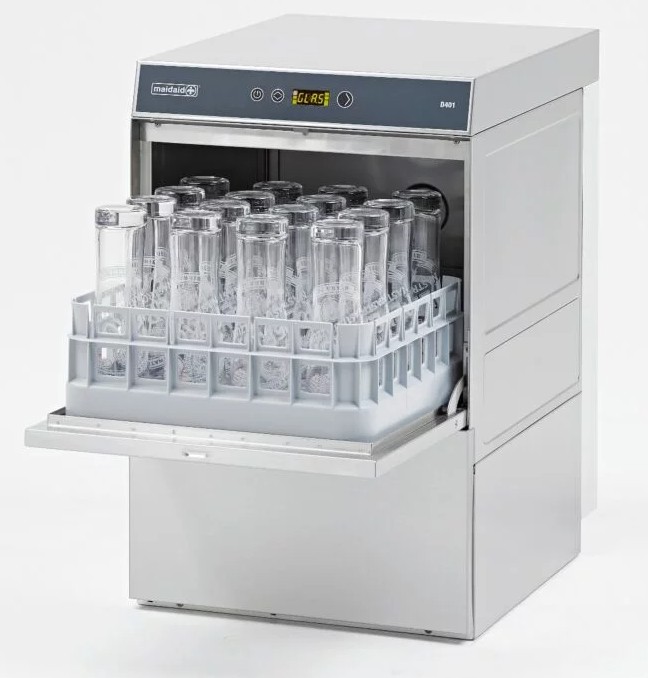
In the bustling environment of bars, pubs, and restaurants, glass washers play a pivotal role in maintaining cleanliness and efficiency. These machines are indispensable for ensuring that glassware is hygienically cleaned, a must in any establishment serving drinks.
Glass washers offer effective cleaning solutions in spaces where every square inch counts. However, the performance and efficiency of these machines can be significantly reduced by common mistakes made by staff during their operation. Other than failing to understand whether your business needs a break tank or drain pump, water softener, there are five other frequent errors. Here we discuss each and how to avoid negative impact on glasswashers and the subsequent results.


1. Not Emptying Glasses Before Loading
One of the most common yet overlooked mistakes is failing to empty glasses of their contents before loading them into the machine. This practice can lead to a multitude of problems that affect both the machine's functionality and the quality of the cleaning process.
The presence of leftover drink dregs, such as beer, wine, or mixed drinks, can significantly impact the glasswasher's performance. These residues, when mixed with the cleaning water, can alter the chemical balance of the detergents, reducing their effectiveness. This is particularly true with beer residue, which, due to its yeast content, can interact adversely with the cleaning agents, leading to a less effective wash and potentially leaving a film or odour on the glassware.
In settings such as events or parties, where glasses may contain not just liquid but also solid residues like confetti, small table decorations, or even bits of food, the risks are compounded. These solid particles can clog the spray arms and filters of the glasswasher, leading to reduced water pressure and impaired cleaning ability. Over time, this can cause wear and tear on the machine, necessitating more frequent maintenance and potentially shortening the life span of the equipment.
2. Rough Handling of Doors
Undercounter glasswashers, designed with practical drop-down doors, are a staple in the fast-paced settings of pubs and bars. Their robust construction is specifically tailored to endure the rigours of such environments. However, despite their sturdy design, these machines are not impervious to damage, particularly when it comes to the handling of their doors.
The hinges and seals on these glasswashers are critical components that ensure the door functions smoothly and maintains a watertight seal during operation. When staff handle these doors vigorously, such as by slamming them shut or yanking them open, it places undue stress on these components. Over time, this repeated force can weaken the hinges, causing the door to misalign or not close properly. Similarly, the seals, which are crucial for preventing water leaks, can degrade or get dislodged, leading to leaks that not only create a mess but can also be a safety hazard in a busy bar environment.
Moreover, the forceful handling of glasswasher doors can have a direct impact on the machine's cleaning efficiency. A door that doesn’t seal properly can lead to a loss of heat and water pressure during the wash cycle, compromising the cleaning results and leading to increased energy and water usage. This not only affects the cleanliness of the glassware but also increases operational costs especially as elements such as hinges and seals are generally not covered under commercial warranties.
3. Not Leaving the Door Open
A frequently overlooked yet crucial aspect of glasswasher maintenance is the practice of leaving the door open, particularly overnight and after cleaning. The rationale behind this seemingly simple action is grounded in the principles of hygiene and machine preservation.
Glasswashers, by their very nature, create a warm and humid environment conducive to bacterial growth. When the door is left closed after use or cleaning, this environment can become a breeding ground for bacteria and mould. These microorganisms not only pose a health risk but can also affect the taste and smell of drinks served in the glassware.
Leaving the door open facilitates air circulation within the machine. This air flow helps to dry out the interior, significantly reducing the humidity that bacteria and mould require to thrive. It’s a natural and effective way to discourage the growth of these unwanted guests. Additionally, allowing the interior to dry out can prevent the formation of unpleasant odours that can sometimes be transferred to the glassware.
This practice is also beneficial from a maintenance perspective. A constantly moist environment can accelerate the degradation of certain components within the glasswasher, such as rubber seals and metal parts. By regularly airing out the machine, the longevity of these components can be extended, ensuring that the glasswasher remains functional and effective for a longer period. Regular cleaning, in accordance with the manufacturer’s recommendations, should be an integral part of the maintenance routine.


4. Inadequate Management of Detergents and Rinse Aids
Effective management of detergents and rinse aids is paramount for the optimal functioning of glass washers. These cleaning agents play a critical role in ensuring that glassware is not only clean but also free from spots, streaks, and residues. The consequences of neglecting to properly maintain these supplies can be far-reaching.
Firstly, allowing detergent or rinse aid levels to run low can compromise the quality of the wash. Glasses may emerge looking dull or with lingering stains, detracting from the overall presentation of the drinks served. In a business where appearances matter, such as in bars and restaurants, this can negatively impact customer perceptions.
Furthermore, incorrectly connecting the lines for detergents and rinse aids can have more serious implications. For instance, if a rinse aid is mistakenly fed into the detergent line, the resulting mix can lead to inadequate cleaning and the formation of a filmy residue on the glassware. This not only affects the appearance but can also alter the taste of the beverages, such as causing beer to lose its effervescence and become flat.
Regular checks and proper replenishment of these cleaning agents are essential to maintain the high standards of cleanliness and service. Staff training should emphasise the importance of correctly handling these supplies to ensure that the glasswasher continues to operate effectively, providing consistently clean and sparkling glassware for every use.
5. Ignoring Pink Slime
The operational environment of glasswashers, rich in yeast and sugar residues from beverages and characterised by heat and humidity, is an ideal breeding ground for bacteria. A key indicator of this bacterial proliferation is the presence of a pink or orange slime. This biofilm typically manifests around the door seals, in the tank corners, and within the wash and rinse arms of the glasswasher.
Such slime is not just unsightly; it represents a significant hygiene risk. It can harbour a variety of bacteria and mould, potentially contaminating the glassware and posing a health hazard to customers. This slime formation is a clear sign that the current cleaning and maintenance regime for the glasswasher is inadequate.
To combat this issue, it is imperative to establish a regular and thorough cleaning schedule, focusing not just on the visible areas but also on those less accessible parts where bacteria can thrive. Using the appropriate cleaning agents and adhering to manufacturer guidelines for machine maintenance are critical steps in ensuring the hygiene and functionality of the glasswasher, thereby upholding the health and safety standards required in food and beverage service establishments.
Avoiding these common mistakes can greatly improve the efficiency and lifespan of your undercounter glasswasher. Once you have spent time researching the best glasswasher to buy, it’s vital that these essential machines are used correctly, maintained regularly, and treated with care. By doing so, staff can guarantee that the glassware is not just clean, but hygienically so, ensuring the health and satisfaction of every customer.


